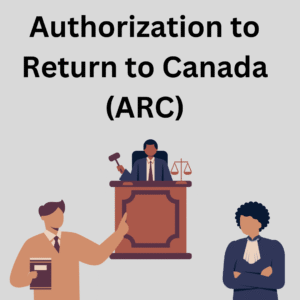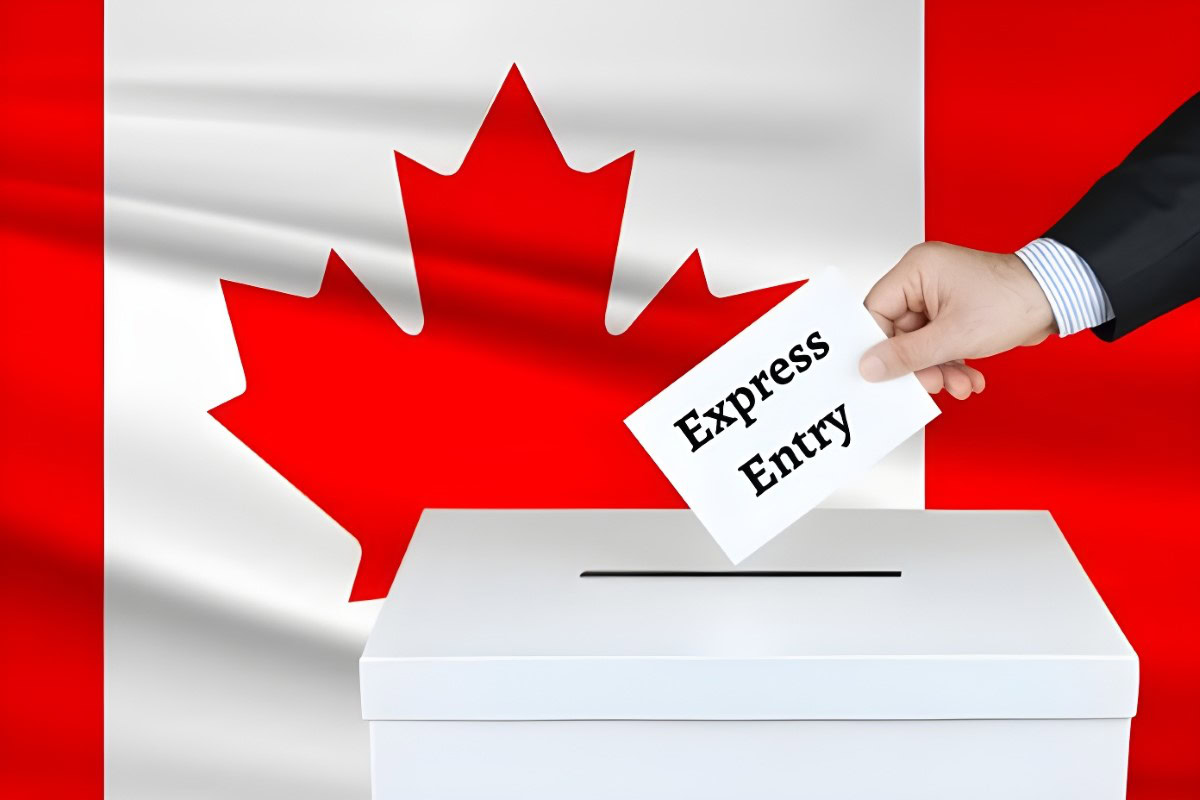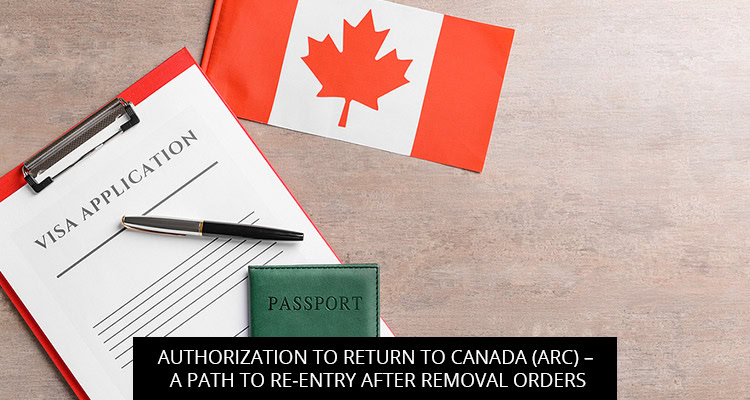Been Removed from Canada? Here’s What You Need to Know About ARC
If you’ve been deported, issued a removal order, or asked to leave Canada under less-than-ideal circumstances, coming back isn’t as simple as buying a plane ticket. Whether you overstayed your visa, breached the conditions of your permit, or had a criminal record that made you inadmissible — if you were subject to a deportation, exclusion, or departure order, you may now need an Authorization to Return to Canada (ARC).
This isn’t just a formality. It’s Canada’s way of vetting whether you should be allowed back in after being previously ordered out. And make no mistake: your past immigration history follows you. But with the right strategy, strong documentation, and a persuasive submission, your return is absolutely possible.
What Is an ARC, Really?
An Authorization to Return to Canada (ARC) is a special approval you must obtain from IRCC if you’ve been previously removed from Canada. Without it, you could be denied entry at the border — even if your new visa or permit is otherwise approved.
Whether you’re applying for a visitor visa, work permit, or permanent residence, if you’ve ever had a removal order enforced, IRCC will not look at your new application unless it’s accompanied by an Authorization to Return to Canada (ARC).
Who Needs an ARC?
You’ll likely need an Authorization to Return to Canada (ARC) if you were issued any of the following enforced removal orders:
Deportation Order: The most serious. You’re permanently barred from Canada until granted an Authorization to Return to Canada (ARC).
Exclusion Order: Typically bars you for 12 months or 2 years, depending on the reason for removal. If you want to come back before the ban period ends, you’ll need an Authorization to Return to Canada (ARC).
Departure Order (not complied with): If you didn’t leave Canada properly within the allowed timeframe, it automatically becomes a deportation order — and yes, that means you need an Authorization to Return to Canada (ARC).

Common Reasons People Get Removed from Canada
Getting removed from Canada is never random — it’s almost always the result of a specific breach of immigration law. And sometimes, it’s not even what you did, it’s what you didn’t know you did. Let’s break it down. One of the most common reasons is overstaying a visa or permit. Whether you lost track of your expiry date or assumed you could extend later, IRCC sees overstays as a serious violation. Then there’s misrepresentation, and no, it doesn’t have to be a big lie. Even a forgotten detail, a missed box on a form, or an inaccurate answer on an old application can be enough to get you removed and hit with a 5-year ban.
Criminal convictions even from years ago or from outside Canada are another major trigger. You may be deemed criminally inadmissible even if you already served your sentence elsewhere. And don’t forget: violating the conditions of your work or study permit (like working for the wrong employer or quitting school) can get your status revoked. Lastly, IRCC may remove you if you’re deemed inadmissible on health, security, or financial grounds, meaning your presence may be seen as a risk or burden to Canada’s systems.
Whether it’s a misunderstanding or a serious infraction, these issues are all fixable—but not if ignored.
Overstaying a Visa or Permit
One of the most common — and often most preventable — reasons people get removed from Canada is overstaying their visa, study permit, or work permit. Whether it’s a simple case of losing track of dates or assuming you could “fix it later,” IRCC sees overstays as a serious breach of immigration compliance. Even if you didn’t mean to overstay, once your status expires and you haven’t applied to extend or restore it, you could be issued a removal order and barred from re-entering Canada without special authorization. Ignorance isn’t a defense — and the longer you wait to address it, the more complicated your return becomes.
Misrepresentation — Even If It Wasn’t Intentional
Misrepresentation is one of the fastest ways to lose your immigration status — and it doesn’t have to be intentional. IRCC defines misrepresentation broadly: that could be forgetting to mention a previous visa refusal, giving incorrect dates on your employment history, or using a document that turns out to be incomplete or unverifiable. Even “small mistakes” can lead to big consequences — including a 5-year ban from entering Canada, inadmissibility, and potential removal. This is why accuracy and transparency are critical. If you’ve made an error, your best option is to confront it head-on — before IRCC does.
Criminal Convictions (Even From Years Ago)
You might think that a conviction from 10 years ago — or one that happened in another country — doesn’t matter anymore. But to IRCC, it might. Criminal inadmissibility is one of the most complex areas of immigration law, and it applies whether the offense was recent or decades old, serious or minor. DUIs, theft, fraud, assault — even if you’ve served your sentence, these can trigger a removal order or bar you from re-entry. The good news? There are solutions, like Criminal Rehabilitation, Record Suspensions, or Temporary Resident Permits (TRPs). But doing nothing is the one guaranteed way to stay stuck.
Violating Permit Conditions
When IRCC gives you a study or work permit, it comes with clear conditions — like who you can work for, how many hours you can work, or maintaining full-time student status. If you break even one of those terms, you risk losing your status and being removed from Canada. Working under the table, quitting school, or engaging in unauthorized employment are common triggers. Often people don’t even realize they’re in violation until it’s too late. If your circumstances change — tell IRCC or apply to change your conditions. Don’t try to “wait it out.”
Health, Security, or Financial Inadmissibility
Canada’s immigration system evaluates more than your documents — it looks at whether you might pose a risk to public health, safety, or the financial system. If IRCC believes your medical condition could place excessive demand on health or social services, or if your background check reveals links to organized crime, human rights violations, or national security concerns, you may be deemed inadmissible and removed. Even financial issues, like proof you can’t support yourself, can trigger removal. These are serious allegations — but with proper legal representation and strong supporting evidence, they can be challenged.

ARC Applications Are Not One-Size-Fits-All
IRCC will consider:
- The reason you were removed
- How much time has passed
- Your current situation and purpose for returning
- Whether you’re still considered a risk to the public or immigration integrity
- If you’ve demonstrated rehabilitation, compliance, and stability
Every ARC request should be packaged with supporting documents, a cover letter that takes full responsibility (where appropriate), and a strong rationale for your return. If there’s criminality involved, you may also need to apply for Criminal Rehabilitation or hold a Temporary Resident Permit (TRP) — in addition to the ARC.
Can You Be Approved?
Yes — and many are. But Authorization to Return to Canada (ARC) requests are highly discretionary. IRCC officers need to be convinced that allowing you back into Canada is in everyone’s best interest — not just yours. The key is credibility, accountability, and a forward-looking case that shows how you’ve turned the page.
The ARC Application Process
An Authorization to Return to Canada (ARC) is not a standalone application — it’s often submitted with a Temporary Resident Visa (TRV) or another relevant application. Immigration officers evaluate your ARC request based on several key factors:
1. Provide Strong Justification for Re-Entry
You need to explain why you’re returning to Canada. This could be for:
- Family reunification
- Employment opportunities
- Humanitarian or compassionate reasons
Be clear and specific — your reason is a critical part of the decision.
2. Demonstrate Changes in Circumstances
Show how your situation has improved since the removal. Examples include:
- Proof of stable employment
- Completion of rehabilitation programs
Compliance with laws in your home country. These help prove you are no longer a risk.
3. Address Past Issues Honestly
Transparency is key. Immigration officers want to see that you understand why you were removed, and that you’ve taken steps to prevent recurrence. For example, if your removal was due to overstaying, you might include financial documents or travel history showing compliance since then.
4. Submit a Well-Documented Application
Include all relevant paperwork:
- Removal order documents
- Letter of explanation
- Police certificates
- Evidence of rehabilitation (if applicable)
- Supporting documents for your reason to return
An incomplete or poorly organized application can lead to refusal.
What Do Immigration Officers Consider?
The Reason for Your Removal
When reviewing your Authorization to Return to Canada (ARC) application, the first thing IRCC wants to understand is why you were removed in the first place. Was it due to a minor immigration error, like overstaying a visa? Or was it the result of something more serious, like misrepresentation or a criminal conviction? The nature and severity of your past violation matters. A simple misunderstanding may be easier to overcome than a pattern of non-compliance or serious inadmissibility. That said, even serious cases can succeed if properly explained. What matters most is whether you’ve taken responsibility — and how you present your case now.
The Time Elapsed Since Your Removal
Time doesn’t heal everything, but in immigration, it can help. Officers will assess how long it’s been since your removal order was enforced. If it was recent, they’ll want to see clear signs of accountability, rehabilitation, or significant change in circumstances. If it’s been several years, the expectation is that you’ve maintained a clean immigration record, stayed out of legal trouble, and taken steps to re-establish credibility. A rushed re-entry request right after being removed usually raises red flags. A well-timed, thoughtful Authorization to Return to Canada (ARC) submission shows maturity and planning.
Your Current Ties to Canada
Why should Canada let you back in? Officers will look at whether you have genuine, ongoing ties to the country. This can include close family members (spouse, children, parents), job opportunities, community involvement, property ownership, or any other meaningful connection. If you’ve built a life here, or if your return supports a Canadian citizen or permanent resident, those ties add weight to your Authorization to Return to Canada (ARC). The more clearly you can demonstrate a legitimate, long-term connection to Canada, the stronger your case.
The Strength and Urgency of Your Reason to Return
Your reason for returning to Canada matters — a lot. Officers will ask: is this just a casual visit? Or are you returning to care for a dying parent, reunite with your children, attend a court date, or fulfill a job contract? Urgency and humanitarian grounds carry weight, especially if your presence is needed in a way that can’t wait. The stronger and more time-sensitive your reason, the more likely your Authorization to Return to Canada (ARC) will be considered favourably. Generic travel or vague intentions won’t cut it.
Your Overall Risk Profile
At the end of the day, immigration officers assess risk. If they believe you’re unlikely to breach immigration law again, aren’t a threat to public safety, and appear stable and transparent — you have a chance. If you’ve reoffended, ignored previous immigration rules, or seem evasive, your application may be refused. This is why every Authorization to Return to Canada (ARC) submission needs to be clean, honest, and strategic. Your goal is to show that the person Canada removed is not the person returning.

Final Thought
Authorization to Return to Canada (ARC) isn’t a checklist — it’s a persuasive argument. Each factor above must be addressed with real documentation, real reflection, and real strategy. If your future in Canada is on the line, don’t leave it to chance. At Akrami & Associates Immigration Law Firm, we know exactly what officers look for — and how to turn your Authorization to Return to Canada (ARC) into a second chance.
Because everyone deserves the opportunity to make things right — if they know how to ask for it.
Immigration Pathways That May Connect with an ARC Application
An Authorization to Return to Canada (ARC) is not typically submitted on its own — it’s almost always included as part of another application, depending on your reason for wanting to return. Below are some immigration pathways that can either incorporate an ARC request or provide grounds to justify it:
1. Temporary Resident Visa (TRV)
If you’re hoping to come back to Canada temporarily (e.g., for tourism, family visits, or business), you must apply for a TRV. If your previous removal order requires an ARC, the ARC request will be assessed as part of your TRV application. You won’t submit a separate Authorization to Return to Canada (ARC)— you simply include your request and explanation within your TRV forms and supporting documents.
2. Temporary Resident Permit (TRP)
If you’re still inadmissible to Canada (due to criminality, misrepresentation, or health grounds), a TRP allows you to enter for justified reasons despite the inadmissibility. If you also have a removal order, your TRP application must also include a request for an ARC. TRPs are often used in urgent or compassionate situations, such as visiting a sick family member or attending an important event.
3. Spousal Sponsorship
If your spouse or partner is a Canadian citizen or permanent resident, they may sponsor you to live in Canada permanently. If you were previously removed and require an Authorization to Return to Canada (ARC), it must be submitted as part of the sponsorship application. Strong family ties and the long-term nature of your relationship can help justify your return and demonstrate rehabilitation or low risk.
4. Criminal Rehabilitation
If your removal was based on criminal inadmissibility, you may need to apply for criminal rehabilitation. If accepted, it removes your inadmissibility, and may help support your Authorization to Return to Canada (ARC) request by showing you’re no longer a risk. Rehabilitation must usually be completed before or alongside any application that includes an ARC.
5. Humanitarian and Compassionate Grounds (H&C)
If you’re applying to remain in or return to Canada based on unique circumstances — such as family hardship, children’s best interests, or medical concerns — your H&C application may also need to include an ARC if you had a previous removal. Officers will weigh your ARC request alongside your compassionate factors.
How Akrami & Associates Can Help
At Akrami & Associates, we understand how intimidating and uncertain the Authorization to Return to Canada (ARC) process can be. With our extensive experience handling complex inadmissibility cases, we can help you:
- Review and assess your removal history
- Identify the best immigration pathway for re-entry
- Prepare a persuasive ARC application with all required documentation
- Handle any concurrent applications (e.g., TRV, TRP, Sponsorship)
- Advocate on your behalf with IRCC
We’re here to make sure your application is accurate, thorough, and tailored for success. Don’t take chances with a process that could affect your future in Canada.
Need assistance with your ARC application? Contact us today.
Latest Immigrations News

September 11, 2025
Canada Super Visa: Step-by-Step Guide for Parents and Grandparents
For many Canadian citizens and permanent residents, bringing parents or grandparents to Canada for extended visits is more than just a wish, it’s a heartfelt need. While most people first consider the traditional visitor visa, there is another option designed specifically for family reunification: Super Visa applications. [...]

August 23, 2025
Intra-Company Transfer (ICT) Work Permit, Your Complete Guide to Working in Canada
For multinational companies, moving key talent across borders is often essential for growth and operational success. The Intra-Company Transfer (ICT) Work Permit provides a streamlined pathway to bring experienced employees to Canada without the time-consuming Labour Market Impact Assessment (LMIA) process. For foreign professionals, it’s more than [...]

August 7, 2025
Is Canada’s Express Entry System Still Fair? A Closer Look at What’s Broken, And How to Fix It
When Express Entry first launched, it was celebrated as Canada’s revolutionary new gateway for skilled immigrants, streamlined, merit-based, and economic-growth driven. But fast forward to today, and many highly qualified newcomers are starting to question whether the system is truly as fair or functional as it was [...]

Book a Conslutation
One of our Representatives will
assist you with your matter. Book Now!
Click here

Call us for
more Information
+1-416-477-2545
Toll Free: 1-877-820-7121
Click here

Write Us (Online Form)
Complete our form and one of our
Representatives will contact you.
Click here
Subscribe To Our Newsletter


